
Decorative plaster for walls from ordinary shtplanke do it yourself Walls
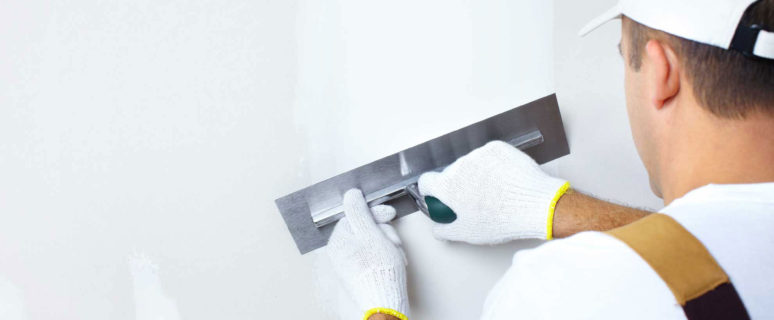
For many years, decorative plaster is currently relevant. This is actually an excellent solution for almost any apartment that allows you to create a unique design, as well as a comfortable setting. Unfortunately, not everyone can afford large-scale repairs, as decorative material often costs non-sash.
Content
On sale you can detect inexpensive materials for finishing surfaces, and in some cases the room may turn out no worse than using decorative plaster. However, there will always be people who wish at all costs to get a decent design using exactly plaster.
Practice shows that instead of decorative material, you can use the most conventional putty. With some manipulations, you can get a really excellent surface with a good decorative style. It is worth saying that the techniques for the transformation of putty in the decorative surface have been used for a long time, and often it all depends on the creative component of a person who is engaged in similar works.
It is worth recognizing that in this process there is a lot of subtleties, which should be known about, so immediately without the study of all the necessary information, nothing good as a result will definitely do.
Of course, precisely the money question is often decisive if it comes to repair activities, especially large-scale. Therefore, the self-created decorative surface of the putty is the best solution.
In this article, we consider the main subtleties of creating decorative plaster based on the most ordinary putty. Let us analyze the main difficulties that usually arise during such repairs.

Features of modern decorative plaster
To date, you can find a huge number of varieties of decorative finishing materials. Most of them are really high-quality products, which is an excellent base for large-scale repair activities. It is worth recognizing that the diversity of plaster does not always have a positive effect on choosing people who want to repair. Practice shows that earlier when the product range was small, it was much easier to make the right choice.
Definitely bad news lies in the fact that the cost of decorative plaster is high enough, even if the scale of repair work is not too large. Accordingly, a dilemma appears before the hosts, the essence of which is either in the purchase of expensive and beautiful finishing material, or inexpensively and less attractive externally resource.
To date, various plastic panels and similar materials are far from the best solution if you need to create a modern and attractive room of the room.
Decorative plasters are materials with different properties, so you can always find exactly what is needed for a specific repair project.
An important component of work on the use of decorative surfaces is the work of relevant specialists. On the basis of plastering, either a certain texture or whole drawings can be applied. Everything is limited only to the possibilities of the master who all this is engaged.
If you pay attention to various accommodation options based on decorative plaster, then really phenomenal results can be noticed. Of course, it is more creative work, however, considerable merit and directly the material itself, on the basis of which repairs are carried out.
Putty as the main finishing material of the walls
When it comes to finishing surfaces, then often the owners look in the direction of putty. This is the most material that the walls are raised, and the perfectly smooth surface is created.
However, as practice is shown, on the basis of a conventional putty, you can create the very surface that is obtained using decorative plaster.
It is worth noting in advance that there is no guarantee of the excellent result of such a finish, however, practice shows that if necessary, the surface will be really not bad. The most important thing is that this will save a substantial part of the cash, and the difference between decorative plaster and putty - really impressive.
To create a decorative surface, you will need to have only finishing putty, as well as tools that material and will be applied to the surface. In the case of tools, the situation is quite interesting, as it all depends on which the end result wants to see the owners. It can only be noted that in some cases, too unusual devices are required to create a decorative surface. For example, if you need to implement a bulk pattern with an appropriate texture, a small brush should be used.
It is also interesting that the surface that has already been decorative changes can also be painted. In fact, this process turns out to be far from the easiest, since it is obtained by the desired shade of the surface by experiments.
Again, you should pay attention to the fact that the worldwide Internet network is full of ready-made solutions in this direction, so it is sufficient to find which color it is better to use for painting walls to which put a putty is applied.
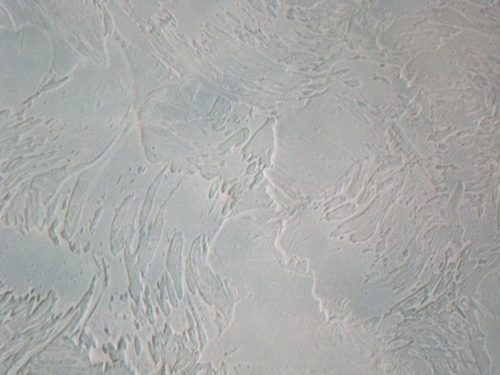
Preparatory activities for decorative plaster
Before proceeding to the responsible part of the work, it is necessary to prepare, it includes several steps:
- At the very beginning, an analysis of the area of \u200b\u200bwork is carried out, which allows you to set the volume of material necessary for repair. For this case, you only need to install the surface area and the thickness of the application so that the situation is completely cleared. Practice shows that the repair can be used and on a plaster basis, and on cement. If the indoor humidity is increased, then the cement mixture will be the only correct option.
- The next step is based on the acquisition of all necessary tools and fixtures for repair. First of all, this is a container in which the solution will be prepared. It will also require a tool to knead the mixture, and it can even be an ordinary stick. Kelma is needed for applying a solution. The spatula will be pulled out the putty on the surface. In addition, it is worth taking care of additional tools, with which it will be possible to create a decorative surface of the wall.
- The main part of the preparatory activities begins with surface cleaning from various contaminants and other problem areas. It is necessary to do everything possible so that not a single span on the wall is, otherwise the final quality of the work may be extremely low. Often the walls have some recesses or hillocks. Small protrusions are better billing with a particular metal tool, but the recesses that cannot be called rarity are better filled with cement mortar. It is necessary to do all this only in extreme cases, since the best foundation for repair work is the source wall.
- Next, you need to take care that the decorative surface is reliable. In this case, we will need a plaster grid that has an extremely small thickness, but its reliability is quite enough for many years. It is worth saying that it is possible to repair and without a grid, but the decorative layer can start cracking, which is still not worth allowing.
- At the end of the preparatory activities, experts advise a thin layer of putty on the surface. The need for such a step is that with such a situation, already during the application of the main layers of the material, no dark spots on the wall will not be formed. Moreover, it is worth paying attention to the fact that in this case a chance appears to apply putty even more evenly.
Application of a layer of decorative plaster
In this case, we will look at a somewhat variant of the mixture, since it is a diversity that is a strong side of decorative mixtures.
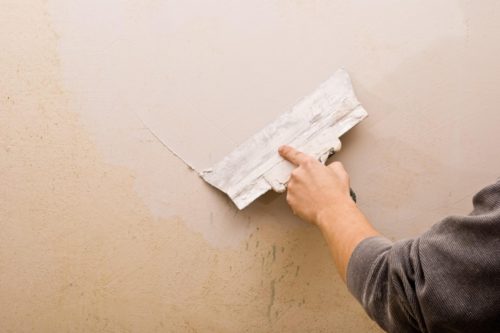
Strong structure of decorative plaster
- The process begins with applying putty from any angle with a small layer in such a way that the sector of the 0.5-meter square is in the end. The layer thickness should be limited to about 3 mm.
- Next, it will be necessary to armared with a metal ironing, which is applied to the corner of the layer. If you have to spend on the surface simply along, then the corresponding lines are obtained that resemble the structure of natural stones. Practice shows that the application of the structure should occur at a certain angle, otherwise it can all look too attractive.
In this case, much depends on the further painting of the surface, since the main goal is to do something in common with the stone structure.
Scale decorative stucco structure
- In this case, a putty layer is applied to 5 mm. It is worth noting that here, as in other cases related to the creation of a structure, much depends on the thickness of the layer. Than he is more, the more distinct the applied structure will be.
- Now you need to arm a spatula, the width of which will be about 10 cm. Starting from the bottom of the surface, you need to make uniform strokes that create a kind of scaly.
- Immediately after pouring the material, you need to cover the surface of one or another paint. It is based on the original color that the surface may become really chic outwardly.
The bad news is that to create such a structure on a huge wall is not the best solution, since such a surface will look extremely unattractive. But on a small scale, the scaly structure looks very solid.
Cave structure of decorative plaster
- A mixture is applied to the wall with a wide spatula. It is necessary to dissolve the putty so that the surface is as smooth as possible.
- This step at first glance may seem rather strange, but the result usually turns out to be more than optimal. We are talking about the use of a polyethylene chicken, which is frozen, and it is applied with its help a unique structure on the surface. It is worth noting that the desired texture, as in the photographs, it can happen from the first time, therefore it is worth carrying out small experiments so that during the very responsible moment the surface turned out to be really attractive.
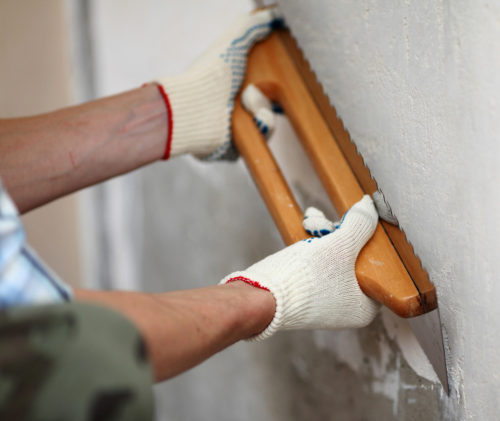
Right kneading putty for decorative wall plaster
If people are engaged in people who do not have too much experience in repair or building events, then the fading of putty is an extremely important aspect. Often the mixture is such that it is practically impossible to apply to the surface of it, what to say about the creation of the decor.
First of all, it is worth considering the specifics of creating gypsum putty with their own hands. As practice shows, the sophisticated preparation of the mixture is the ability to save even more money. Thus, the following components are needed:
- up to 3 kg of chalk;
- 1 kg of gypsum;
- carpentry glue.
All this is mixed together with a certain amount of water. It is necessary to control the consistency of the mixture personally. For decoration, the average density is required, which will be highly kept on the surface, but at the same time so that one or another texture can be applied. The plaster grid about which we said earlier should significantly improve the situation associated with the application of the mixture.
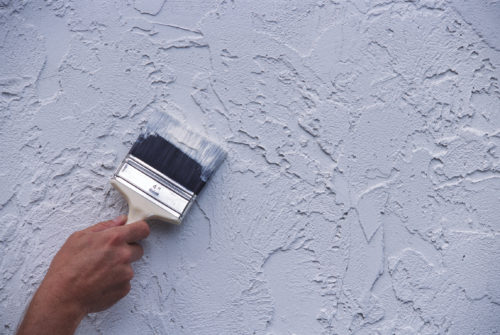
It is also worth keeping in mind the following recommendations:
- Many workers who differ from not too large experience make a decision to accelerate the repair process, therefore include a drill to mix the mixture to the maximum speed. In fact, it is impossible to hurry in this process. It is known that during too fast kneading in the mixture, air, which adversely affects the overall condition and durability of the material.
- The addition of water into the mixing container is a responsible effect, as we are talking about that people often take any water and are used in the repair process. Here, the main requirement is in the water temperature. One must be not cold, and not hot. If you ignore this recommendation, there may be problems with the quality of the mixture. Often, such a putty quickly collapses. In addition, water itself should be relatively clean, as it combines with the rest of the mixture components and significantly affects the quality. Therefore, tap water is the best option.
- Well, at the end I would like to say a few words about the volume of the mixture, which is used for repair work. You need to know that the putty is frozen for 40 minutes, and during this time the entire volume of material should be used. Of course, we are talking about sufficiently small portions that must be missed, otherwise most of the material simply leaves in the trash.


















